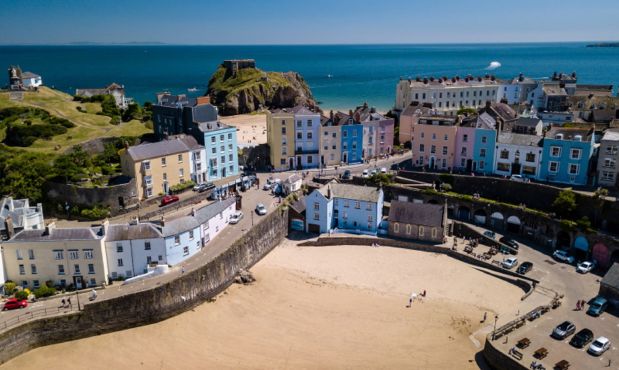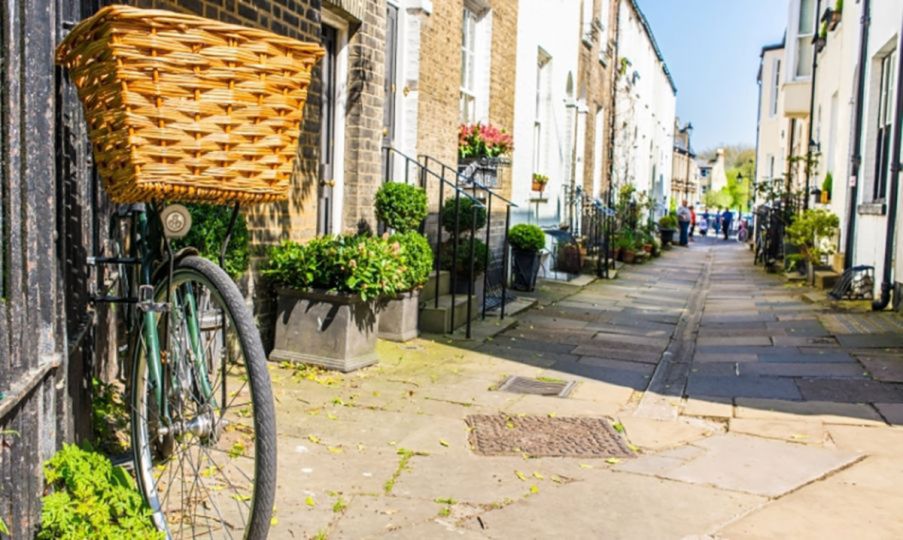
Take 5… Homes by the sea
Have a look at five wonderful coastal properties to make that dream come true


Separating your plastics, walking to work, and using a smart meter are just some of the ways many of us try to make a difference in our everyday lives in the name of being more eco-friendly. But above individual actions, how do the places we live in support our activities on a larger scale through infrastructure and architecture? And how are urban areas trying to elevate the individual environmental efforts of both residents and workers?
“Sustainable living isn’t just limited to confines of the home”, says Vanessa Hale, head of residential research and insights. “While recycling and energy saving lightbulbs are good foundations, being greener can extend beyond this. Infrastructure plays a big part in enabling residents to achieve their own environmental targets: whether that’s by cycling to work, opting for an electric vehicle over conventional fuel, or by working in a sustainably certified office space.”
BNP Paribas Real Estate has undertaken a unique analysis of urban locations as part of their NEXT X research. The research creates a ranking as a result of an analysis of proprietary sets of data that go above and beyond traditional location analysis, looking at 30 metrics and over 5,700 data points applied to 95 UK locations.
When it comes to green credentials, the analysis focused on environmental datasets and revealed that that the city of Cambridge comes out on top, as the highest scoring UK location, followed by Milton Keynes, Glasgow, Exeter, Bristol, Dundee, Reading, Leeds, Edinburgh and Newcastle completing the top 10.
The environmental ranking examined metrics including the supply of environmentally friendly office space (such as BREEAM), ultra-low emissions vehicle (ULEV) usage, electric vehicle charging infrastructure, cycle parking provision at rail stations, and air quality.
Through applying a matrix to a series of data sets, locations were awarded a score to demonstrate that place’s environmental progression and eco-credentials. The university city of Cambridge tops the environmental list thanks to factors including its high level of bicycle parking and a three-fold increase in the use of ULEVs in the past four years.
“You only have to visit the city for the day to see that residents here are much more likely to be peddling to and from work and home or jumping in a ULEV, making full use of the cycle lanes, bicycle traffic lights and ample bike parking,” says Michael Houlden, head of our Cambridge office.
"The city remains popular with a younger crowd, who have perhaps gone to university here and are returning to the city. They’re environmentally clued-up and make conscious lifestyle choices. While the River Cam and green spaces Cambridge provides are a major pull, it’s great to see that residents' eco-expectations are being met further by the provision of green infrastructure and services.”
Within London, the borough of Hammersmith and Fulham leads the green way due to its high increase in ULEVs and its provision of EV charging points. London’s number of BREEAM-rated office buildings is understandably higher than other UK urban centres: Westminster is home to by far the highest BREEAM-rated office buildings, followed by Camden and Islington.
The table below shows the top 20 locations both within the UK, and within London only.
“This list of locations demonstrates the places where consumers, investors, developers and planners are pushing a green agenda to the benefit of eco-conscious residents,” explains Vanessa, which is why the ranking is so valuable. In a world where we are all trying to do what we can to better the environment and make conscious decisions when it comes to sustainability, the way urban areas are tackling the issue straight on is incredibly important in supporting individual actions.
The environmental scores of urban places is part of a bigger picture in terms of location analysis. The NEXT X program goes beyond the traditional measures of examination, providing a different way of looking at UK towns and cities in terms of real estate. The tool adds crucial pillars to those traditionally used in analysis of real estate and infrastructure, and economics. The additional pillars - community, new skills and transition, health and wellbeing, and a real estate and infrastructure ‘2.0’ - take how we view our urban spaces to the next level, through a new lens, and in light of some of the major challenges that face the built environment.
Discover more here.